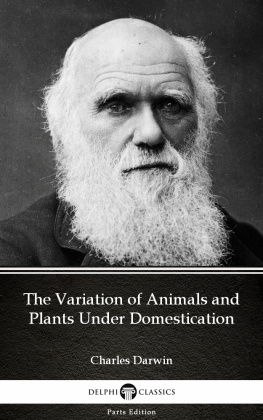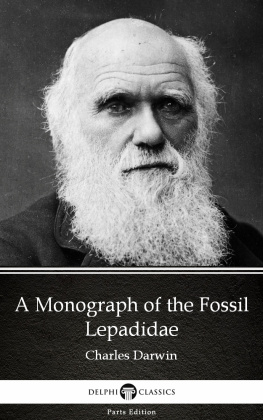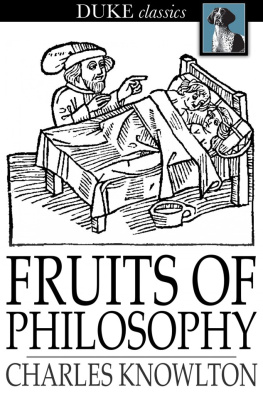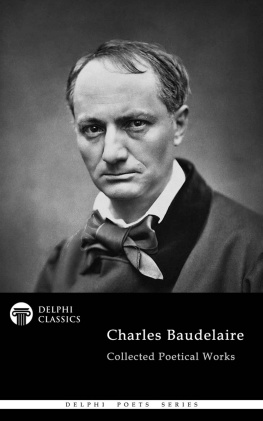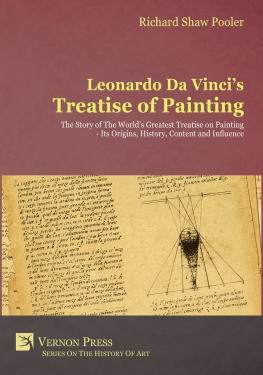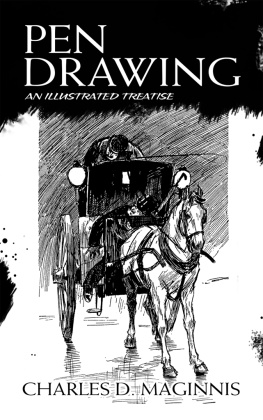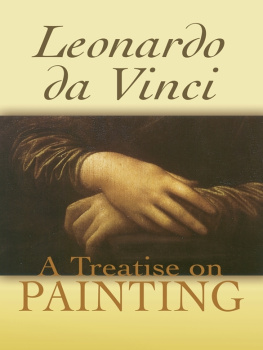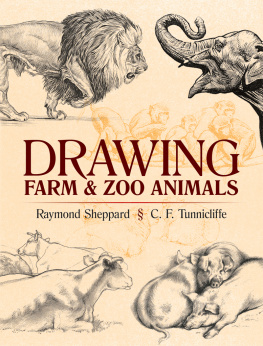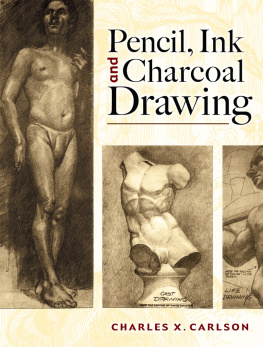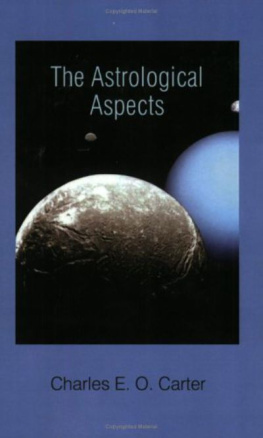Charles Donagh Maginnis - Pen drawing; an illustrated treatise
Here you can read online Charles Donagh Maginnis - Pen drawing; an illustrated treatise full text of the book (entire story) in english for free. Download pdf and epub, get meaning, cover and reviews about this ebook. year: 1899, publisher: Boston, Bates & Guild Company, genre: Romance novel. Description of the work, (preface) as well as reviews are available. Best literature library LitArk.com created for fans of good reading and offers a wide selection of genres:
Romance novel
Science fiction
Adventure
Detective
Science
History
Home and family
Prose
Art
Politics
Computer
Non-fiction
Religion
Business
Children
Humor
Choose a favorite category and find really read worthwhile books. Enjoy immersion in the world of imagination, feel the emotions of the characters or learn something new for yourself, make an fascinating discovery.
- Book:Pen drawing; an illustrated treatise
- Author:
- Publisher:Boston, Bates & Guild Company
- Genre:
- Year:1899
- Rating:5 / 5
- Favourites:Add to favourites
- Your mark:
- 100
- 1
- 2
- 3
- 4
- 5
Pen drawing; an illustrated treatise: summary, description and annotation
We offer to read an annotation, description, summary or preface (depends on what the author of the book "Pen drawing; an illustrated treatise" wrote himself). If you haven't found the necessary information about the book — write in the comments, we will try to find it.
Pen drawing; an illustrated treatise — read online for free the complete book (whole text) full work
Below is the text of the book, divided by pages. System saving the place of the last page read, allows you to conveniently read the book "Pen drawing; an illustrated treatise" online for free, without having to search again every time where you left off. Put a bookmark, and you can go to the page where you finished reading at any time.
Font size:
Interval:
Bookmark:
PEN DRAWING
AN ILLUSTRATEDTREATISE
BY CHARLES D. MAGINNIS
F.A.I.A., LL.D.
FELLOW AM. ACAD. ARTS AND SCIENCES
FORMERLY INSTRUCTOR IN ILLUSTRATION, COWLES ART SCHOOL
INSTRUCTOR IN PEN DRAWING, BOSTON ARCHITECTURAL CLUB
SEVENTH EDITION
To Mr. David A. Gregg and toMr. Bertram G. Goodhue, who have generously made special drawings for thislittle book, and to the Publishers who have courteously allowed me to make useof illustrations owned by them, my thanks and my cordial acknowledgements aredue.
C. D. M.
FIGURE
Considered the father ofAmerican Gothic architecture, Charles Donagh Maginnis was born in CountyLondonderry, Ireland on January 7, 1867. He was educated in Dublin, emigratedto Boston at age 18 and got his first job apprenticing for architect Edmund M.Wheelwright as a draftsman. In 1900 he became a member of the Boston Society ofArchitects, serving as its president from 1924 to 1926. Though he worked in anumber of styles, Maginnis became a distinguished proponent of Gothicarchitecture and an articulate writer and orator on the role of architecture insociety. His pioneering work both influenced and was influenced by fellowGothicist Ralph Adams Cram.
In 1898 he went intopartnership with Timothy Walsh and Matthew Sullivan to form Maginnis, Walsh andSullivan. This was the same year he designed St. Patrick Roman Catholic Churchin Whitinsville, Massachusetts. This commission started his career designingbuildings for the Roman Catholic Church. In 1906 Mr. Sullivan withdrew and thefirm was renamed Maginnis & Walsh. This firm would become one of theleading architectural firms in the first half of the twentieth century. In1909, Maginnis & Walsh won the competition to build the new campus ofBoston College in Chestnut Hill, Massachusetts. The collegiate Gothic designwas deemed "the most beautiful campus in America" by The AmericanArchitect magazine and established the firm's reputation in collegiate andecclesiastical architecture. Maginnis & Walsh went on to design buildingsat over twenty-five colleges and universities around the country, including themain buildings at Emmanuel College, Boston MA, the chapel at Trinity Collegeand the law school at the University of Notre Dame. Moreover, the design ofGasson Tower at Boston College is considered a predecessor of the dominanttowers of collegiate Gothic campuses such as Harkness Tower at Yale Universityand the chapel tower at Duke University by Horace Trumbauer of 1930-35.
In the Boston area, he alsobuilt the church of St. Catherine of Genoa in Somerville, Massachusetts, St.John The Evangelist in Cambridge and St. Aidan's Church in Brookline,Massachusetts where he was a parishioner along with the Kennedy family andother prominent Irish-Americans. St. Aidan's, the location of the christeningof John F. Kennedy, has since been closed and may be converted into housing inthe near future. In other parts of the country he designed the Basilica of theNational Shrine of the Immaculate Conception in Washington, D.C., the Cathedralof Mary Our Queen in Baltimore and the interior of Emmanual Masqueray'sBasilica of St Mary in Minneapolis as well as the sacristy and rectory for theCathedral of St. Paul in Saint Paul. Among his other designs are the chancel atTrinity Church in Boston's Copley Square and the high altar at St. Patrick'sCathedral, New York.
From 1937 to 1939 Maginnisheld the office of President of the American Institute of Architects. In 1948the Institute presented him with the Gold Medal for "outstanding serviceto American architecture," the highest award in the profession. Hereceived honorary degrees from, among others, Boston College, Harvard, HolyCross, Notre Dame and Tufts. He died in Brookline, Massachusetts in 1955.
The Charles D. Maginnis archives and the Maginnis& Walsh archives are housed at the Burns Library of Rare Books and SpecialCollections at Boston College. The Maginnis & Walsh collection at theBoston Public Library contains work of the architectural firm from 1913 to1952.
As taken from Wikipedia, May, 2011: http://en.wikipedia.org/wiki/Charles_Donagh_Maginnis
Art, with its finite means,cannot hope to record the infinite variety and complexity of Nature, and socontents itself with a partial statement, addressing this to the imaginationfor the full and perfect meaning. This inadequation, and the artificialadjustments which it involves, are tolerated by right of what is known asartistic convention; and as each art has its own particular limitations, soeach has its own particular conventions. Sculpture reproduces the forms ofNature, but discards the color without any shock to our ideas of verity;Painting gives us the color, but not the third dimension, and we are satisfied;and Architecture is purely conventional, since it does noteven aim at the imitation of natural form.
The Conventions of Line Drawing
Of the kindred arts whichgroup themselves under the head of Painting, none is based on such broadconventions as that with which we are immediately concernedthe art ofPen Drawing. In this medium, Nature's variety of color, when not positivelyignored, is suggested by means of sharp black lines, of varying thickness,placed more or less closely together upon white paper; while natural formdepends primarily for its representation upon arbitrary boundary lines. Thereis, of course, no authority in Nature for a positive outline: we see objectsonly by the difference in color of the other objects behind and around them.The technical capacity of the pen and ink medium, however, does not provide avalue corresponding to every natural one, so that a broad interpretation has tobe adopted which eliminates the less positive values; and, that form may notlikewise be sacrificed, the outline becomes necessary, that light objects maystand relieved against light. This outline is the most characteristic, as it isthe most indispensable, of the conventions of line drawing. To seek to abolishit only involves a resort to expedients no less artificial, and the results ofall such attempts, dependent as they necessarily are upon elaboration of color,and a general indirectness of method, lack some of the best characteristics ofpen drawing. More frequently, however, an elaborate color-scheme is merely astraining at the technical limitations of the pen in an effort to render thegreatest possible number of values.
It may be worth while toinquire whether excellence in pen drawing consists in thus dispensing with itsrecognized conventions, or in otherwise taxing the technical resources of theinstrument. This involves the question of Style,of what characteristicpen methods are,a question which we will briefly consider.
What Constituted "Style"
It is a recognized principlethat every medium of art expression should be treated with due regard to itsnature and properties. The sculptor varies his technique according as he worksin wood, granite, or marble; the painter handles his water-color in quiteanother manner than that he would employ on an oil-painting of the samesubject; and the architect, with the subtle sense of the craftsman, carriesthis principle to such a fine issue as to impart an individual expression evento particular woods. He knows that what may be an admirable design whenexecuted in brass may be a very bad one in wrought-iron and is sure to be anabsurdity in wood. An artistic motive for a silver flagon, too, is likely toprove ugly for pottery or cut-glass, and so on. There is a genius, born of itsparticular properties, in every medium, which demands individual expression.Observe, therefore, that Art is not satisfied with mere unrelated beauty ofform or color. It requires that the result confess some sensible relation tothe means by which it has been obtained; and in proportion as it does this, itmay claim to possess that individual and distinctive charm which we call"Style." It may be said, therefore, that the technical limitations ofparticular mediums impose what might properly be called natural conventions;and while misguided ambition may set these conventions aside to hammer outeffects from an unwilling medium, the triumph is only mechanical; Art does notlie that way.
Next pageFont size:
Interval:
Bookmark:
Similar books «Pen drawing; an illustrated treatise»
Look at similar books to Pen drawing; an illustrated treatise. We have selected literature similar in name and meaning in the hope of providing readers with more options to find new, interesting, not yet read works.
Discussion, reviews of the book Pen drawing; an illustrated treatise and just readers' own opinions. Leave your comments, write what you think about the work, its meaning or the main characters. Specify what exactly you liked and what you didn't like, and why you think so.



